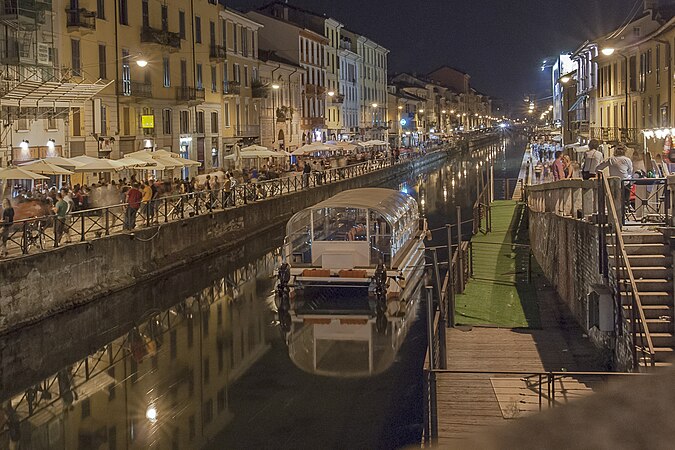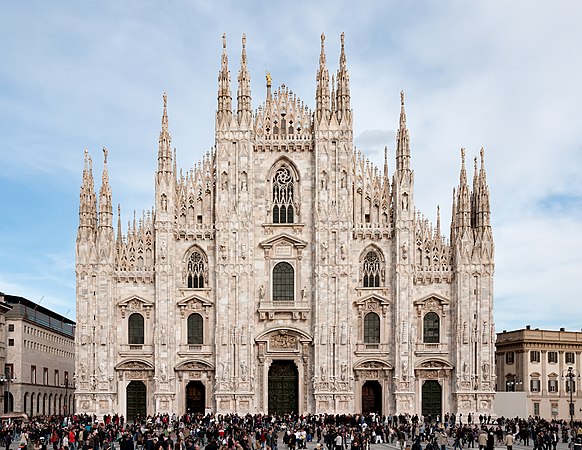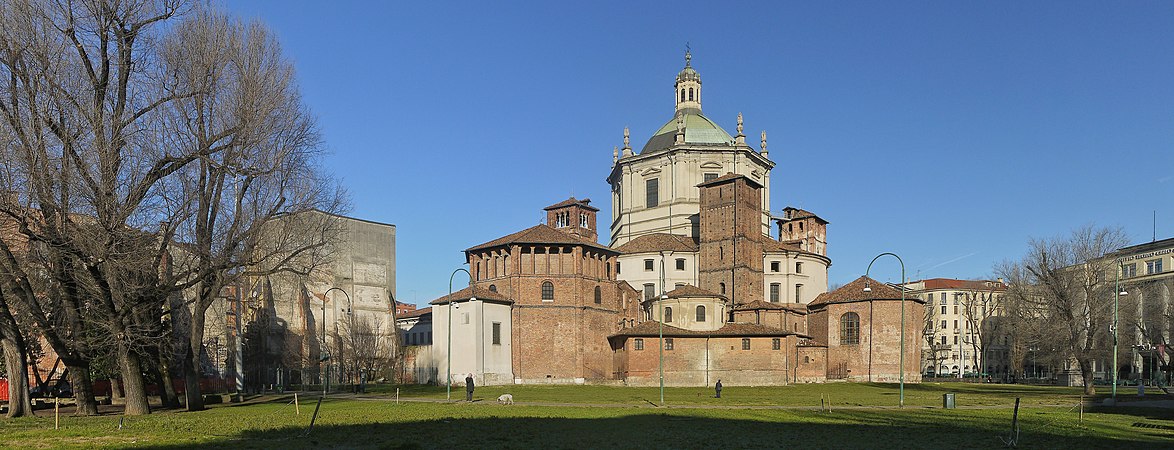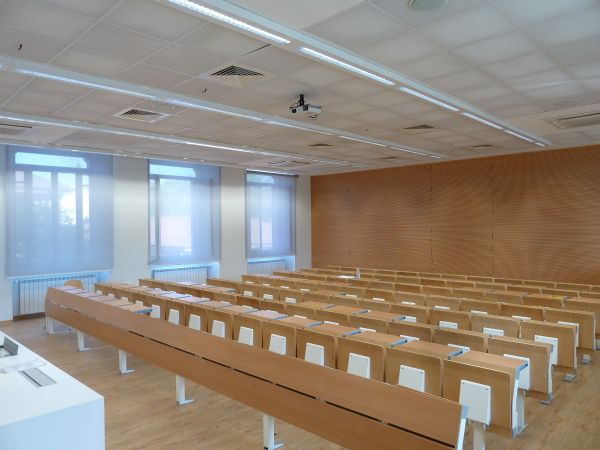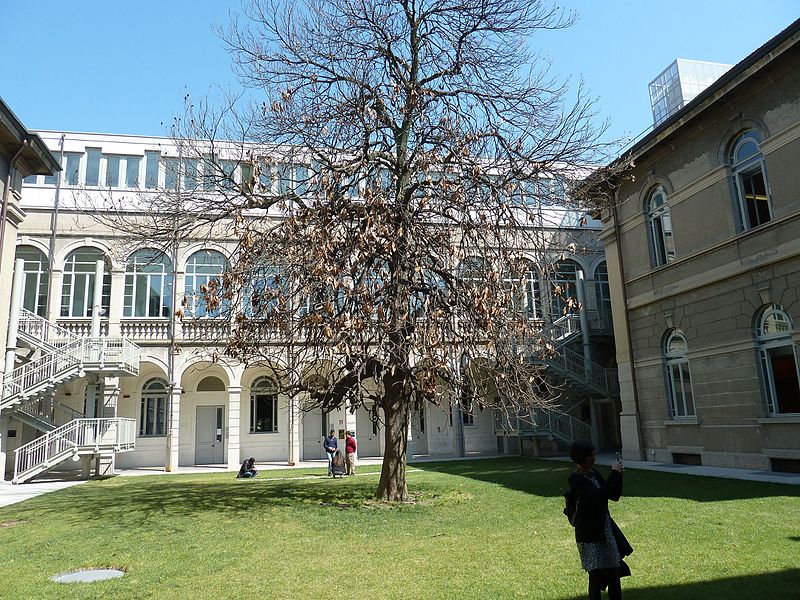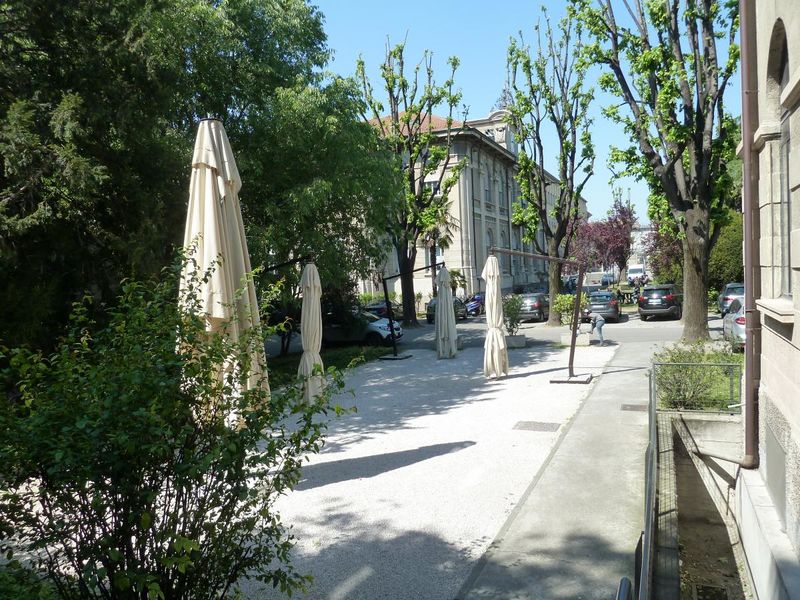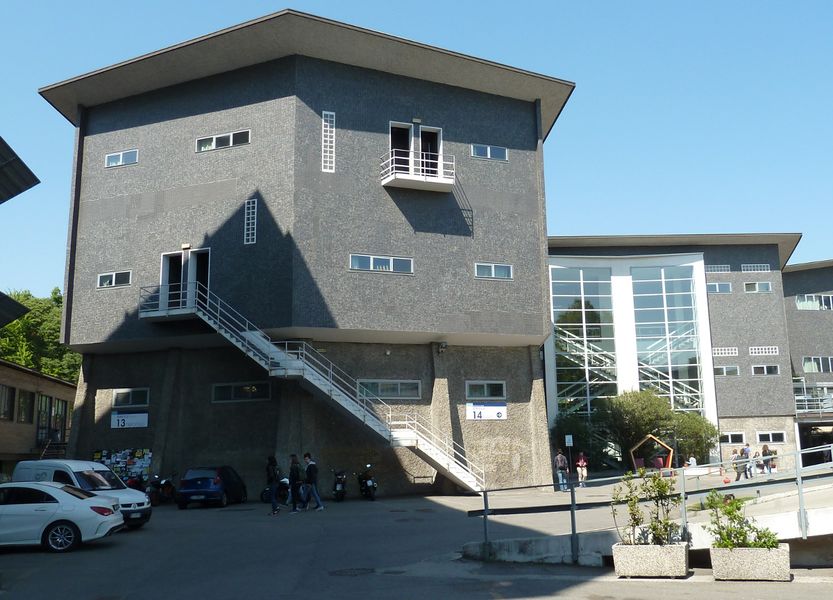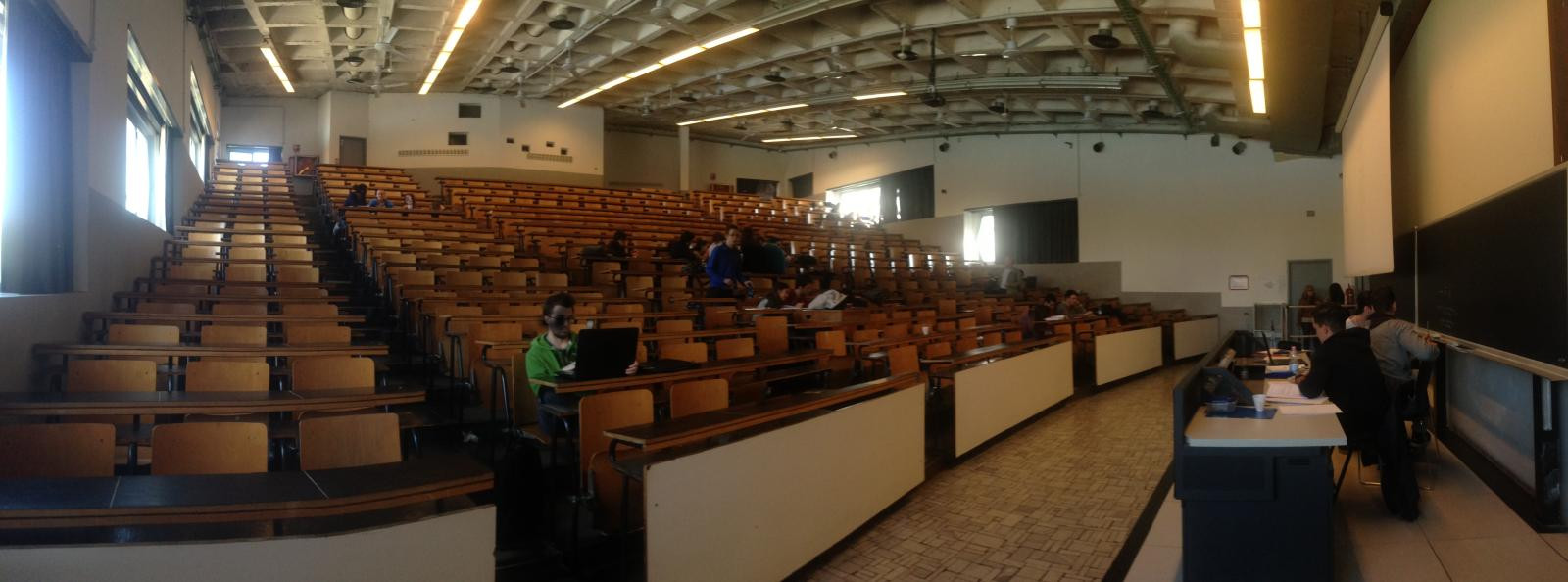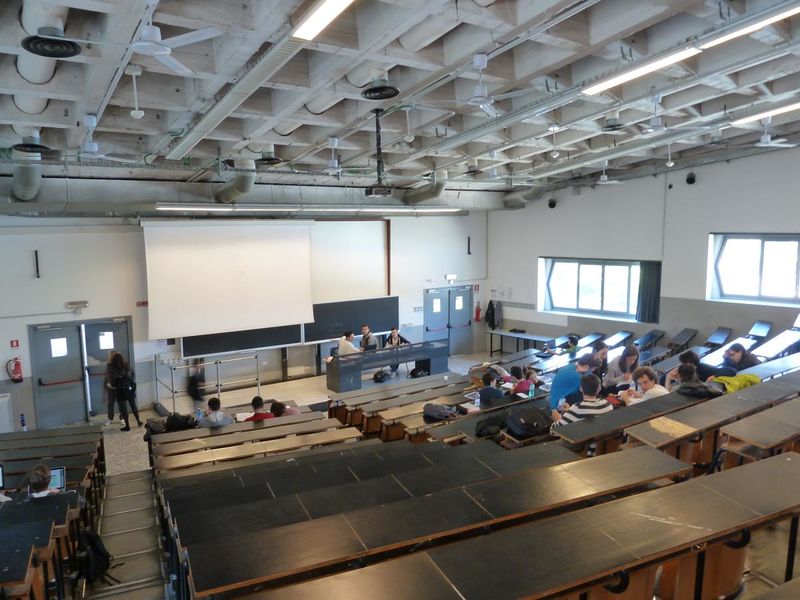State of the Map 2018/Call for venues/Milan
Welcome to the bid proposal page to host State of the Map 2018 in Milan, Italy
Who we are
Wikimedia Italia is an association of volunteers promoting open culture projects on a national scale since 2005. The organization is the official Italian chapter of Wikimedia Foundation inc., the US Foundation known around the world for Wikipedia, the free online encyclopedia.
In January 2016, Wikimedia Italia has been officially recognized as the Italian chapter of the OpenStreetMap Foundation. This very important outcome was achieved thanks to our former Vice - President Simone Cortesi, OpenStreetMap volunteer since the beginning, and former Board member and Secretary of the OpenStreetMap Foundation.
This result gained an enthusiastic reception by the italian OpenStreetMap community, that was already talking about the creation of a national chapter. Wikimedia Italia and OpenStreetMap have a common mission and vision and are heading in the same direction: working together has been simple and natural from the beginning.
During the last ten years of activity Wikimedia Italia built a strong expertise in the organization of national and international events.
On a national scale, Wikimedia Italia organizes conferences, meetings, editathons[1] and - from 2014 - mapping parties together with OSM global community, that have registered a great participation, also from beginners.
With regards to the international events, Wikimedia Italia in 2013 organized the Wikimedia Conference, the annual meeting of all the Wikimedia chapters to discuss the state-of-the-play and the future of the Wikimedia movement in terms of organizational development. Wikimedia Italia also supported the promotion of Wikimania 2016, the annual conference of the Wikimedia movement. About 1,000 volunteers attended the event to discuss about Wikimedia projects and learn new approaches. Thanks to our dedicated Project Manager we reached about 1300 students and 200 teachers from schools in Lombardy region with activities related to Wikipedia and other Wikimedia projects; some of them were also involved as volunteers in Wikimania Esino Lario. Furthermore, we organized Wikimedia courses in several universities in the Milan and Lecco area.
In the last two years Wikimedia Italia also organized OSMit (the italian State of the Map). In 2016 OSMit was held in Milan at BASE, Wikimedia Italia headquarter, and involved many representative of the public administration and OSM community. This year Wikimedia Italia co-organized FOSS4G-IT 2017 in Genoa. The event for the first time included both OSMit and GFOSS-day. More than 350 participants attended the event, organized in collaboration with the University of Genoa.
Politecnico di Milano (POLIMI), co-organizer, is one of the main italian universities; funded in 1863 by Francesco Brioschi, it is the oldest university in Milan and the largest technical university in Italy, with about 42,000 students. According to the QS World Universities Ranking 2017 it is the 24th in the world and 1st in Italy among the technical universities.
Politecnico is also very active in the research field and supporting OpenStreetMap and the related projects, as Youth mappers. Polimi is also one GeoForAll laboratory ("Geo for All" is the Open Source Geospatial Foundation's Committee for Educational outreach). The University runs hundreds of events a year (e.g. 29 events only in May 2017 https://www.eventi.polimi.it/?lang=en) and it also organized FOSS4G Europe 2015 (https://europe.foss4g.org/2015/) in Como. Wikimedia Italia and Politecnico di Milano have already worked together in several occasions, both education activites, research, mapathons and public events. A recent example is "Mapping for cultural heritage": a mapping and editing party promoted on March 30, 2017 by Wikimedia Italia, Maptime Milan, Polimappers and GisTonic Milano. The event was attended by more than 30 participants.
We are now definitely ready to host State of the Map in Italy!
Our vision
"Imagine a world in which every single human being can freely share in the sum of all knowledge. That's our commitment". This is the vision of the Wikimedia movement and we think it has a lot in common with OpenStreetMap and the philosophy behind it.
Thanks to our experience in connecting the "wiki universe" to OpenStreetMap, we would like State of the Map 2018 - Milan to be the first international collaboration between the Wikimedia movement experts and the OSM community. The participants will start to explore the possible interactions between the projects both in theory and in practice, through specific workshop sessions.
In the last few years we already laid the groundwork for this, working both with the wiki and OSM community in Italy: an example is the OSM geolocalization of the Paolo Monti archive on Wikimedia Commons.
State of the Map would be an occasion for the communities to join together and express their full potential in promoting open and free culture. We are planning to bring together a diverse group of people, involving OSMers, Wikipedian, Wikimedians together with the private and public sector and the academy.
The event will also be an opportunity for visitors to discover the local cultural heritage...and maybe to plan a vacation in Italy!
Why Milan?
- Bosco Verticale, Porta Nuova, Milan.jpg
Bosco Verticale. Photo by 20WashingtonPaul (Own work),CC BY-SA 4.0, via Wikimedia Commons
- Milano skyline 02.jpg
Milano Skyline. Photo by Conte di Cavour (Own work), CC BY-SA 4.0, via Wikimedia Commons
Milan is the second largest city of Italy and the economic capital of the country. It is also well known in the world for fashion, finance, design and culture. The city is definitely the beating heart of Italy, a reference point for arts, culture and fashion but also for technology and innovation, an easy-to-reach place and - starting from April 2016 - the new "home" of Wikimedia Italia.
Ancient buildings, monuments, modern design and artworks from different historical periods can be found in Milan. Walking down the streets you can find the past and the future mixed together: you may encounter Duomo di Milano, the main Milan Cathedral but also Bosco Verticale, which has been awarded as the “2015 Best Tall Building Worldwide”. Leonardo da Vinci's masterpiece "The Last Supper" is located in the church of Santa Maria delle Grazie in the very center of the city, not far from the new Piazza Gae Aulenti designed by the argentine architect Cesar Pelli.
In 2015, Milan hosted the Expo: in order to prepare to this international event, the transportation system and all the tourist facilities such as hotels, infopoint, etc. have been all renewed and expanded.
Milan is definitely the perfect location to host an international event such as "State of the Map".
Who is the Team?
Our team members are:
Wikimedia Italia
- Alessandro Palmas (OpenStreetMap project manager for Wikimedia Italia)
alessandro.palmas@wikimedia.it
- Giuliana Mancini (Executive Director)
giuliana.mancini@wikimedia.it
Politecnico di Milano
- Professor Maria Antonia Brovelli ( https://wiki.osgeo.org/wiki/User:Maria ), Politecnico di Milano joined the organization with enthusiasm. For the next FOSS4G 2018 she's going to be Chair of the Academic Track.
- Ludovico Biagi, Associate Professor of GeoFundamentals and Positioning and Location Based Services.
- Marco Minghini is a Postdoctoral Research Fellow at Politecnico di Milano, Researcher on OSM, Mentor of PoliMappers (a chapter of YouthMappers) and Voting Member of the Humanitarian OpenStreetMap Team.
A few more members of Wikimedia Italia team and Politecnico di Milano will also be involved.
For further detail please contact: Wikimedia Italia - Associazione per la diffusione della conoscenza libera Via Bergognone 34 - 20144 Milano Tel. 039.5962256 www.wikimedia.it
When?
A good season for State of the Map in Italy would be mid June - mid September: the weather in Milan is fine and there are plenty of events in the city. In addition, if some of the participants are interested in extending their stay in Italy, they can consider a vacation in our beautiful country: places such as the Alps - the Dolomites for example are well known and appreciated all over the world - , the Ligurian Riviera and many beautiful Italian cities (Venice, Florence, Bologna and so forth) are easily reachable by train or by plane.
Where?
Politecnico di Milano (POLIMI) is located near the city centre
http://osm.org/go/0CjGVAUA--?m= , just 3 stops away from Central Station and 5 from Milano Porta Garibaldi
The venue
Building 3 ‘Gino Cassinis’ at the Politecnico Campus Milano-Leonardo will be the heart of SOTM: the venue, very fancy and antique, is part of the oldest complex of the university, inaugurated in 1927. It is located in a central neighborhood of the city, very lively (expecially in spring and summer) and full of green areas.
The building is very close to the University’s main entrance; all the campus is covered by WIFI and accessible for disabled people.
Piazza Leonardo da Vinci, freshly renovated square, is half covered by a garden where citizen and students have lunch or spend their spare time. The square is covered by free WIFI operated by Milan municipality.
Building 3 'Gino Cassinis' layout
Lecture theatre style rooms (main room)ː Sala 'Osvaldo De Donato' and Aula S.0.2
- Sala 'Osvaldo De Donato'
Capacity: 270 people
Equipped with 2 videoprojectors, microphones and translation system.
A sferical view of Sala 'Osvaldo De Donato'
- Aula S.0.2
Capacity: 260 people
The room can be connected via audio/video system with room 'Osvaldo De Donato'. This allows to create a "virtual space" of 530 seats without moving the people from one room to another.
Small rooms for breakout sessionsː S1.3, S1.4, S1.5, S.16
All this four rooms are similar and have a capacity that swings from 88 to 132 seats. All the rooms have AC and LAN plug and are provided with two wheelchair accessible desk.
Area for lunch and coffee breaks
The suitable area for the reception/front desk, sponsors and the catering is located at the entrance of the venue.
Here a 360° photo of the hospitality, sponsors and catering space
The campus also have outdoor spaces that can host coffee breaks and lunch.
Indoor garden, a sferical view
Alternative option for the main room: Building Trifoglio
For the presentation sessions, it is also possible to use one of the four big rooms (400 seats) in Edificio 'Il Trifoglio', located 200m far from Building 3.
A couple of view on the 400 seat room:
And here an immersive photo of the room
A separate document based on 'SotM bid template' has been prepared with info about the venue and catering prices.
Please, finally note that for SOTM2018 POLIMI will set up a GNSS test field useful for workshop and free GPS test.
Transportation / How to reach Milan
Going to/from/around in Milan is very easy: you can count on a capillary underground system, the surface public transportation (tram and buses) and several train stations linking downtown and the neighborhoods. Tickets are pretty cheap and it is also possible to rent a bike across the city (one big bicycle parking is just in front of the main entrance of the venue, Politecnico di Milano). There also many car sharing options (Car2Go, Enjoy, Share ‘N Go, etc,).
Arriving by plane
Located in Northern Italy, Milan is served by three airports, all well connected to the city center.
Milano Malpensa (MPX) is the main international and intercontinental hub, with direct flights from almost any European country, and very well connected to the main U.S. and Asian airports. It is located 46 km from the city center. Once you land, check the terminal you are into: there are two, both served by railway. To reach Milan city center, you can choose between the following options:
- Railway shuttle to Milan Cadorna Station via Malpensa Express, departing from Terminal stations (~36 min).
- Bus shuttle to Central Station, from both terminals; cheaper than the train but relies on highway traffic so leave a bit of buffer timeː Autostradale, Malpensa Shuttle, Terravision
- Taxi.
- Private shuttle: suggested only if you are in a large group (let's say 10 or more), and you can arrange your arrival together well in advance.
Milano Linate (LIN) is the city airport, located just 7 km from the city center, connecting Milan to most European capitals, among a fair share of national flights. Your options to reach the city center could be:
- Urban route bus, number 73, straight to San Babila square in the city center.
- Bus shuttle to Central Station, leaving every half an hourː Air Bus Linate, Linate Shuttle, Malpensa Shuttle
- Taxi: It's within the municipality borders, so just ensure the meter is used.
- Private shuttle: minibus for 16 people. They pick you up at the gate, leave you at the venue, and wait for you if the plane is late.
Milano Orio al Serio (BGY), located 45 km from the city, is the main hub for low-cost airlines (pro-tip: Orio is actually the city of Bergamo's airport, not Milan's).
- Bus shuttle to Milan Central Station. Here some operatorsː Terravision, Orio Shuttle, Autostradale
- City bus to Bergamo, then local train to Milan (1 hour).
- Taxi.
- Private shuttle: same as above. There are many companies providing the service, all of them let you compare prices online.
Arriving by rail
Milan is served by an high-speed rail network connecting Venice (2h30’), Turin (1h) – Paris (8h30’), Bologna (1h) and Rome (3h20’).
National Railway system: Trenitalia and Italo. The main station (Stazione Centrale) is in the very heart of Milan and is connected through 2 underground lines, with fares up to 1,50 € per trip (discounts for multiple or daily tickets). There is a large taxi parking just outside the left exit. Most high speed and international trains arrive here. While you are there, pay attention to this masterwork of architecture, an unique blend of fascist monumental architecture, Art Deco and Liberty style.
Some international trains – mostly from Paris (TGV Italy-France) – arrive and depart from Porta Garibaldi, the second large city station. Porta Garibaldi is just five stops far from the event location (Piola) and two stops from Stazione Centrale. The advice here is to look as the newly built Porta Garibaldi skyscrapers, a new modern addition to the city center designed by Cesar Pelli.
Arriving by bus
Flixbus connects Milan to several cities in Europe.
Eurolines wide network of connections to European Countries.
Other route: several connections to Germany.
- ↑ editing marathons, a special type of meetup aimed at improving the free encyclopedia. It is usually held in libraries, museums or other cultural institutions and focused on a specific topic. It involves expert users but it’s also a great way to attract new Wikipedians
